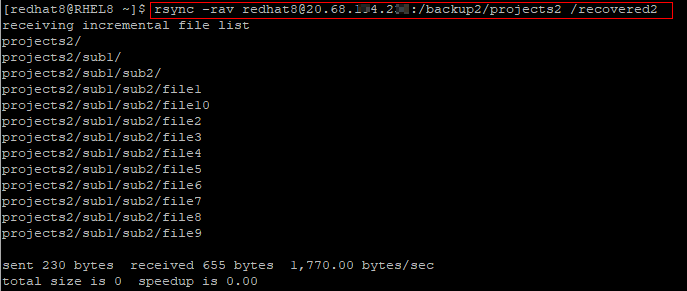Prerequisite
A working SSH configuration.
Copy remote files recursively with scp
Scp is an acronym for Secure Copy. The scp tool is used to securely copy files to and from a remote computer using the secure shell protocol (SSH.)
The basic syntax of the scp command is as follows.
To recursively copy files, you would need to use the -r option.
For example, the command below will recursively copy the content of my /projects directory to a /backup directory on the remote server. A valid username on the remote server is required.
Figure 1 – Copy files recursively to a remote server with scp
Here is another example to recursively copy the content of the /backup/projects directory from the remote server to a directory on my local machine.
Figure 2 – Copy files recursively from a remote server with scp
Copy remote files recursively with rsync
The rsync tool (Remote Sync) is used to copy (synchronize) files between local or remote computers. Rsync also uses SSH to communicate. The basic syntax of the rsync command is as follows.
The option to recursively copy files is denoted by -r.
Other recommended options include:
-a which preserves the properties of the copied files
-v which displays a detailed output
One very good thing about rsync is that it compares the source and destination directories, and it copies only the differences. This feature reduces network data usage, and it makes rsync a good tool for mirroring and backing up data.
Below is an example to recursively copy the content of my /projects2 directory to a /backup2 directory on the remote server. A valid username on the remote server is required.
Figure 3 – Copy files recursively to a remote server with rsync
The next example recursively copies the/backup2/projects2 directory content from the remote server to a directory on my local machine.
Figure 4 – Copy files recursively from a remote server with rsync
Conclusion
This tutorial showed you how to copy files recursively in Linux by using the scp and rsync tools. Let us know what you think.




